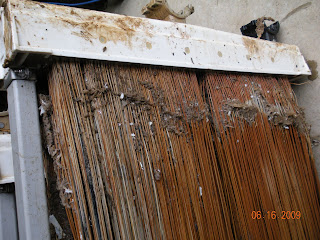- Recycle loads from the sludge thickening process were overloading the plant with BOD and TN
- Odors associated with sludge handling were creating a nuisance in the neighborhood and needed to be controlled
- Numerous issues related to the SBR operation were identified including air flow meters that were not reading correctly, clogged decant valves from accumulated debris, and poor biomass quality related to widely fluctuating F:M.
- Consumable costs related to supplemental bacteria, polymer use and enzymes were becoming a burden for the WPCA
As a result of the initial findings, the highest priority item was to get the sludge thickening operation under control. The waste sludge holding tank was typically operated at over half full and without the ability to aerate the tank, anaerobic conditions were created which impacted sludge thickening efficiency, odors and filtrate quality. The sludge holding tank was emptied and now the staff keeps the tank empty daily. This significantly reduced the BOD and TN loading on the SBR's and allowed the staff to eliminate one of four SBR's from operation. Odors have also been reduced significantly.
It was apparent the SBR's had accumulated large amounts of debris (screening) as a result of the headworks barscreen being out of service for several months. The WPCA fun
As a result of these changes to the operation of the plant it is expected the WPCA will save significant dollars on power, consumables and avoid paying nitrogen fees to the State. Once I have some firm figures, I will post the anticipated cost savings.





